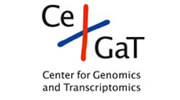LAB HOURS: MON - THU and SAT : 9:00 AM to 9:00 PM
FRI and SUN : 9:00 AM to 6:00 PM

Article - Sperm DNA Integrity: Impact on Repeated Abortion - 01/2016
FML at EOFF 2016 in Dubai, 01/2016

Sperm DNA Integrity: Impact on Miscarriages and Recurrent Abortion
PD Dr. med. habil. Michaela Jaksch
Senior Consultant Laboratory Medicine
Medical Director
Freiburg Medical Laboratory ME LLC, Dubai, UAE
Abstract
Pregnancy success rates depend on many factors, e.g. the quality of sperm, oocytes, the endometrial environment, the fetomaternal crosstalk and many more.
Studies have shown a significant increase in miscarriage due to high sperm DNA damage compared to those with low damage. Repeatedly, correlation has been shown between morphologically abnormal sperm and increased sperm DNA fragmentation. Conventional sperm analysis may show normal results regarding concentration, progressive motility and morphology, however this does not always exclude sperm DNA damages.
Major causative factors of sperm DNA fragmentation are: advanced male age, leukocytospermia, lifestyle factors, genetic factors, prolonged fever, varicocele, environmental factors such as pesticides, high temperature, radiation, oxidative damage and cancer. The resulting molecular mechanisms (Topoisomerase, ROS) - yet not fully understood - will be discussed. Therapeutically, possibilities are limited (lifestyle adjustment, antioxidant supplementation).
The British Fertility Society concluded recently 'that there is evidence of a relationship between sperm DNA damage and either semen parameters and/or outcome of assisted conception. However reports conflict and depend largely on the laboratory test utilized'.
In order to reduce the risk of miscarriage due to sperm DNA damage, embryologists should be able to choose sperm with low DNA damage for ART.
This article shall provide a critical review on the latest literature.
Sperm DNA Fragmentation and Recurrent Pregnancy Loss
Forty to fifty percent of recurrent pregnancy losses (RPL) remain unexplained (American Society for Reproductive Medicine, ASRM)
RPL is defined as 2-3 failures before 20 weeks of gestation.
The current diagnostic approaches include chromosome analysis ( in both, wife and husband), testing for autoimmune disorders including the antiphospholipid syndrome and for coagulation disorders, such as thrombophilia. In addition the crosstalk between embryonal (fetal) and maternal immune system might be disturbed. Special investigations on different T-cells such as Natural Killer Cells, the TH1-TH2 balance as well as the Cytokine release can be tested in these cases (Krieg and Westphal, 2015). Finally, endocrinological causes such as hypothyreoidism and PCOS as well as defined gene mutations and structural uterine abnormalities are known to contribute to a significant extent to RPL (for review see Yadava and William, 2014).
Further evidence comes from several publications studying the association of sperm DNA damage and RPL.
Robinson et al. published a meta-analysis in 2012 including 16 studies: 'We identified 16 cohort studies (2969 couples), 14 of which were prospective. Eight studies used acridine orange-based assays, six the TUNEL assay and two the COMET assay. Meta-analysis showed a significant increase in miscarriage in patients with high DNA damage compared with those with low DNA damage [risk ratio (RR) = 2.16 (1.54, 3.03), P < 0.00001)]. A subgroup analysis showed that the miscarriage association is strongest for the TUNEL assay (RR = 3.94 (2.45, 6.32), P < 0.00001).'
The Etiology of Sperm DNA Fragmentation
The etiology of sperm DNA fragmentation is complex and multifactorial. Many factors are under discussion such as significantly increased reactive oxygen species (ROS) production, defective apoptosis, abnormal chromatin incorporation during spermiogenesis, lower antioxidative capacity, when compared to normal samples. The basic causes of these abnormalities are discussed to be environmental, such as lifestyle, smoking, irradiation, chemotherapy or pathophysiological such as leukocytospermia, varicoceles and cancer.
Three main hypoytheses exist (Schulte et al., 2010).
Chromatin packaging abnormalities, especially due to the impairment of the enzyme DNA topoisomerase II. Another cause is attributed to reactive oxygen species (ROS) which were found to positively correlate with sperm DNA fragmentation. Sources of ROS are leukocytes and immature sperm.
The third hypothesis focuses on programmed cell death (apoptosis). This is necessary, as the population of germ cells must be limited. However impaired expression of apoptosis markers might interfere and lead to DNA damage.
Sperm DNA Fragmentation - Assays
Detectable sperm DNA defects are single strand and double strand DNA breaks. Double DNA strand breaks have been discussed to be more related to infertility than single strand breaks (for review see Evenson et al., 2002). Single base modifications and defective linkages within the strands are not recognized.
Sperm Chromatin Structure Assay (SCSA)
The currently widely used test is the Sperm Chromatin Structure Assay (SCSA). This test uses fluorescent markers and special stains in order to differentiate and count intact versus fragmented DNA with flow-cytometry. SCSA is now considered as the most efficient and reproducible assay (Evenson et al., 2002). At present SCSA is the only test of sperm DNA damage assessment for which validated clinical interpretation criteria exist. Sperms can be shipped frozen. The measurement is reported as % DNA Fragmentation Index (DFI).
Comet Assay
This test is performed on lysed sperms suspended in agarose gels, electrophoretically separated and stained with fluorescent DNA binding markers. The test was earlier used to measure genotoxic damage in somatic cells. Spermatozoa with high levels of DNA strand breaks have increased comet tail fluorescent intensity (Hughes et al, 1996) and comet tail length (Singh and Stephens, 1998). The results are reported as % of cells with migration tails containing fragmented DNA. The weakness of this test is that - until today - no useful clinical thresholds exist.
TUNEL Assay
Terminal deoxynucleotidyl transferase dUTP nick end labeling (TUNEL) is a method for detecting DNA fragmentation by labeling the terminal end of nucleic acids. Originally described in the paper by Gavrieli, Sherman, and Ben-Sasson in 1992, TUNEL has become one of the main methods for detecting apoptotic programmed cell death.
Both, ssDNA and dsDNA breaks can be detected. Two detection methods can be applied with the TUNEL test, flow-cytometry and microscopy. The results are reported as % of cells with labeled DNA.
As with the SCSA test, sperms can be shipped frozen. The TUNEL test has been recently better standardized on 194 infertile men and 25 healthy controls (Sharma et al. 2010).
Halosperm Test
The Halosperm test bases on the Sperm Chromatin Dispersion (SCD) technique, which was first described by Fernandez et al., 2003. It differentiates sperm with normal DNA from those with fragmented DNA by showing a halo in intact sperm and small or absent halo in sperm with DNA damage. A colored agent stains the DNA in the sperm capsule. Intact DNA disperses through the membrane after acid treatment and protamine lysis and form a halo around the head of the sperm. If the DNA strands are damaged, the dispersion is less or absent. When 30% or more sperm show small or no halo, the sample is considered to be abnormal.
Results are reported as % cells with small or absent halo.
Acridine Orange Test
This test is a simplified method of the SCSA test and does not need a flow-cytometer. The technique uses a fluorescence microscope after staining with Acridine Orange and is fast, easy to handle and inexpensive. The disadvantages are low reproducibility, color fading and indistinct color identification.
Other Assays
Aniline blue staining
Chromomycin A3 (CMA3) staining
Toluidine blue
In situ nick translation (ISNT)
For review on assays see Evgeni et al. (2014).
Is there a Correlation between Sperm DNA Fragmentation and Conventional Semen Analysis?
As with the whole topic of sperm DNA fragmentation, the findings are controversial. However there is growing evidence that a higher sperm DNA fragmentation rate is correlated with reduced sperm quality, concentration and motility and this is found especially in advanced paternal age (Wyrobek et al., 2006). Morphologic abnormalities are also increased in samples showing a higher fragmentation rate (Evgeni et al., 2015). A detailed review on sperm quality and its relationship to natural and assisted conception (British Fertility Guidelines for practice) was published in 2013 by Tomlinson et al.
Is there a Treatment?
In a recent meta-analysis with 17 trials, Ross et al. (2010) showed an improvement in sperm motility and pregnancy rates, both spontaneous and assisted, with the use of antioxidants. Fourteen of the 17 (82%) trials showed an improvement in either sperm quality or pregnancy rate after antioxidant therapy.
In any case of inflammatory/infectious disorder with leukocytospermia, antibiotic or anti-inflammatory treatment should be considered.
Lifestyle changes should be considered as well (smoking cessation, reducing stress etc.).
Summary, Recommendation and Perspectives
The main disadvantages of most existing assays are low or no standardization. In this context assay protocols of different laboratories differ significantly. The TUNEL test, repeatedly discussed as the most accurate test, is labor intensive and the standardization is still not satisfactory. All investigations using staining methods and bright field or fluorescence microscopes are subjective and less reproducible.
To date, SCSA is the best medically validated and most robust assay, however requiring the most expensive equipment. The Halo test might present the best alternative (Evgeni et al, 2014).
As with the British Fertility Society, the American Society for Reproductive Medicine concluded similarly: 'At present, the results of sperm integrity testing alone do not predict pregnancy rates achieved through natural conception or with IUI, IVF, or ICSI. However further research may lead to validation of the clinical utilities of these tests'.
In summary, we recommend to investigate sperm DNA fragmentation as a second line of testing in case of RPL, advanced paternal age and unexplained infertility of a couple.
However, further correlation studies of sperm DNA damage with pregnancy outcome are required in order to achieve a reasonable level of evidence. In addition, further research should enable embryologists in the future to separate DNA damaged sperm from normal sperm.
Literature
American Society for Reproductive Medicine (ASRM) www.asrm.org
ASRM guideline (2013): the clinical utility of sperm DNA integrity testing. Fertil Steril; 99(3):673-677
British Fertility Society: see www.britishfertilitysociety.org.uk
Evgeni et al. (2014) Human Sperm DNA Fragmentation and its Correlation with Conventional Semen Parameters. J Reprod Infertil; 15(1):2-14
Evgeni et al. (2015) Conventional semen parameters and DNA fragmentation in relation to fertility status in a Greek population. Eur J Obstet Gynecol Reprod Biol; 188:17-23
Fernandez et al. (2003) The sperm chromatin dispersion test: a simple method for the determination of sperm DNA fragmentation. J Androl; 24(1):59-66
Gavrieli et al. (1992) Identification of programmed cell death in situ via specific labeling of nuclear DNA fragmentation. J Cell Biol; 119(3):493-501
Hughes et al. (1996) A comparison of baseline and induced DNA damage in human spermatozoa from fertile and infertile men, using a modified comet assay. Mol Hum Reprod 2(8): 613-619
Krieg and Westphal (2015) Immune Function and Recurrent Pregnancy Loss. Semin Reprod Med; 33(4):305-3012
Robinson et al. (2012) The effect of sperm DNA fragmentation on miscarriage rates: a systematic review and meta-analysis. Hum Reprod; 27(10): 2908-2917
Ross et al. (2010) A systemic review of the effect of oral antioxidants on male infertility. Reprod Biomed Online; 20:711-723
Schulte et al. (2010) Sperm DNA damage in male infertility: etiologies, assays and outcomes. J Assist reprod Genet; 27:3-12
Sharma et al. (2010) TUNEL as a test for sperm DNA damage in the evaluation of male infertility. Urology; 76(6): 1380-1386
Singh and Stephens (1998) X-ray induced DNA double strand breaks in human sperm. Mutagenesis; 13:75-79
Tomlinson et al. (2013) Sperm quality and its relationship to natural and assisted conception: British Fertility Society Guidelines for practice. Human Fertility Online: 1-19
Wyrobek et al. (2006) Advancing age has differential effects on DNA damage, chromatin integrity, gene mutations, and aneuploidies in sperm. PNAS; 103(25):9601-9606
Yadava and William (2014) Evidence-based management of recurrent miscarriages. J Hum Reprod Sci; 7(3):159-169

Lab hours
MON - THU and SAT 9:00 AM to 9:00 PM | FRI and SUN : 9:00 AM to 6:00 PM













